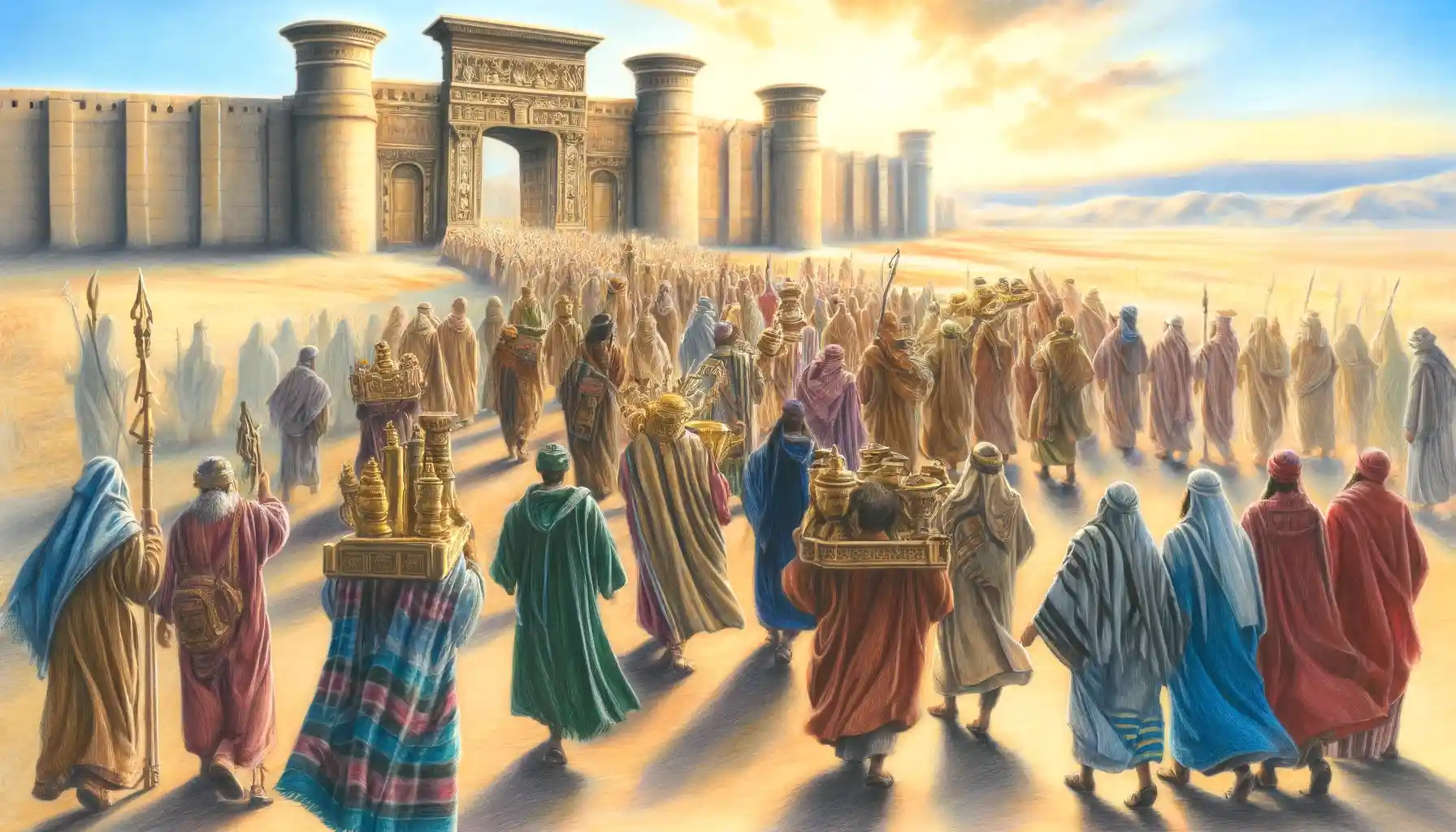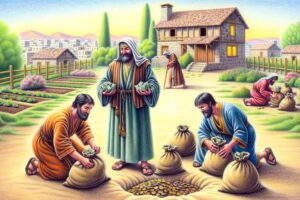
The Return from Exile
The Return from Exile is described in Ezra 1:1-11, where King Cyrus of Persia decrees the return of the Jewish exiles to Jerusalem to rebuild the Temple, fulfilling biblical prophecies and marking a pivotal moment in Jewish history.
- Cyrus’s Decree: King Cyrus of Persia issues a proclamation throughout his kingdom that God has charged him to rebuild the Temple in Jerusalem.
- Permission for Return: Cyrus’s decree not only allows but encourages any Jewish exiles throughout his realm to return to Jerusalem to participate in this project.
- Support for the Project: In addition to permitting their return, Cyrus calls on the people of his realm to support the returning exiles with silver, gold, goods, and livestock, along with voluntary offerings for the Temple.
- Restoration of Temple Treasures: Cyrus also returns the gold and silver vessels that Nebuchadnezzar had taken from the Temple and placed in the temple of his god in Babylon. These are entrusted to Sheshbazzar, the prince of Judah, to be returned to Jerusalem.
- The Number of Returnees: The text lists the specific number of gold and silver vessels being returned, totaling 5,400 articles, underscoring the thorough restoration intended for worship practices.
Contextual Background
The Return from Exile, detailed in Ezra 1:1-11, occurs at the end of the Babylonian captivity, a significant period in Jewish history. This event is catalyzed by the decree of King Cyrus of Persia, after he conquered Babylon in 539 BC. His policy of repatriating displaced peoples and restoring their temples was revolutionary for the era and had profound implications for the Jewish community.
Theological Insights
- Fulfillment of Prophecy: The decree by Cyrus is presented as a fulfillment of God’s prophecy, specifically foretold by the prophet Isaiah (Isaiah 44:28, 45:1). This connection underscores a theme central to the Hebrew Bible, where historical events are often viewed through the lens of divine intervention and fulfillment of divine promises.
- Divine Sovereignty Over Kings: Cyrus’s acknowledgment that “The LORD, the God of heaven, has given me all the kingdoms of the earth” (Ezra 1:2) indicates a recognition of divine sovereignty. This proclamation not only legitimizes his rule but also illustrates the biblical theme that God can use even non-Israelite rulers to achieve His purposes.
- Restoration and Renewal: The return to Jerusalem and the reconstruction of the Temple symbolize themes of restoration and spiritual renewal. The Temple held central importance in Jewish religious life, and its rebuilding represents a renewal of the covenant relationship between God and His people, as well as a restoration of religious and communal life.
Historical and Cultural Implications
- Cyrus’s Policies: Cyrus’s approach to governance, particularly his respect for the customs and religions of the people in his empire, was notably enlightened for the period. His policies promoted stability and loyalty among conquered peoples, contrasting sharply with the often brutal practices of the Babylonians.
- Economic and Social Impact: The return of the exiles and the restoration of the Temple involved significant economic and social restructuring. The returnees needed to reintegrate into a society that had changed considerably in their absence, and they faced challenges from those who had remained in the land.
- Archaeological Evidence: While the biblical account provides a religious framework for these events, archaeological findings, including the Cyrus Cylinder, offer additional insights into the period, corroborating aspects of Cyrus’s policy towards conquered nations.
Ethical and Moral Dimensions
- Justice and Reparation: Cyrus’s act of returning the sacred vessels can be seen as an act of justice, correcting the wrongs done by Babylonian plunder. This gesture of returning stolen goods is an early example of what might now be considered an act of reparation.
- Leadership and Governance: Cyrus’s example sets a precedent for leadership that respects and upholds the religious and cultural traditions of different peoples. His model suggests that effective governance involves understanding and supporting the spiritual and communal needs of diverse populations.
Conclusion
The Return from Exile as described in Ezra 1:1-11 is not merely a historical account but a profound narrative filled with lessons on leadership, justice, and divine providence. This story resonates with themes of hope, renewal, and the interplay between divine prophecy and human agency, offering enduring insights into the nature of faith and the responsibilities of power.



